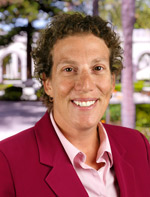Five Minutes With Audio & Video Home
fiveminuteswith
University of San Diego Successfully Implements Mobile CMMS
Kimberly Carnot, the director of facilities services and planning, facilities management at the University of San Diego, discusses her school's implementation of a mobile CMMS.

Kimberly Carnot
director of facilities services and planning, facilities management
University of San Diego
1. How has your department approached the issue of a mobile CMMS for front-line technicians?
We wanted our front line staff to see the benefits of the CMMS system and the handheld devices. In order to understand needs and get buy-in, we did a small pilot deployment. This allowed us to collect feedback and improve our training plan. We had two pilot groups use the devices for four weeks. We held roundtable discussions and had the pilot group members complete surveys. Their feedback allowed us to select the right size and type of device that best fit their needs.
2. What were the initial software considerations in this process?
Mobility was a large factor in our selection of the CMMS system. We knew during the selection process that we wanted to go mobile. With the CMMS we selected there were two options for mobile software platforms. We were able to select a more robust version for our supervisors and a basic version for our technicians in the field.
3. What were the initial hardware considerations?
We wanted a device that was easy for our technicians to use. We needed it to be supported through a full commitment from the CMMS vendor. And it had to meet the campus requirements and be supported internally by our IT department.
4. Where is the department in terms of implementing and using mobile CMMS?
We have accomplished a lot since we launched our CMMS last summer, as 80 percent of our workforce has been issued a mobile device. We will achieve full deployment in the next month. Our technicians are creating work orders, receiving work orders, and recording labor. They have access to building plans and other resources to assist them in completion of their work in the field.
5. What kind of feedback have you received from technicians and CMMS users about using the software?
Several:
Generally the feedback has been positive. This was a huge step for our workforce particularly because of lack of exposure to CMMS systems and use of mobile devices in the field. We are seeing increased efficiency and our workforce sees the value as well. The one opportunity for improvement is to continue to advocate for reduced keystrokes and simplified navigation in the software development. In addition, the scheduling platform is not as robust as we hoped so we continue to investigate workarounds while waiting for product enhancements.
6. What lessons have you learned from the process?
We kept class size small and rolled out the devices in phases. It is important to also allow time between rollouts to troubleshoot problems, answer questions and provide additional training. You need to staff up for that effort. We also made the decision to train on desktop computers first. This increased our training time but provided a solid foundation before we moved to the smaller screen size of mobile devices.
Find more on this topic:
CMMS, software, educational facilities
posted: 5/5/2014








